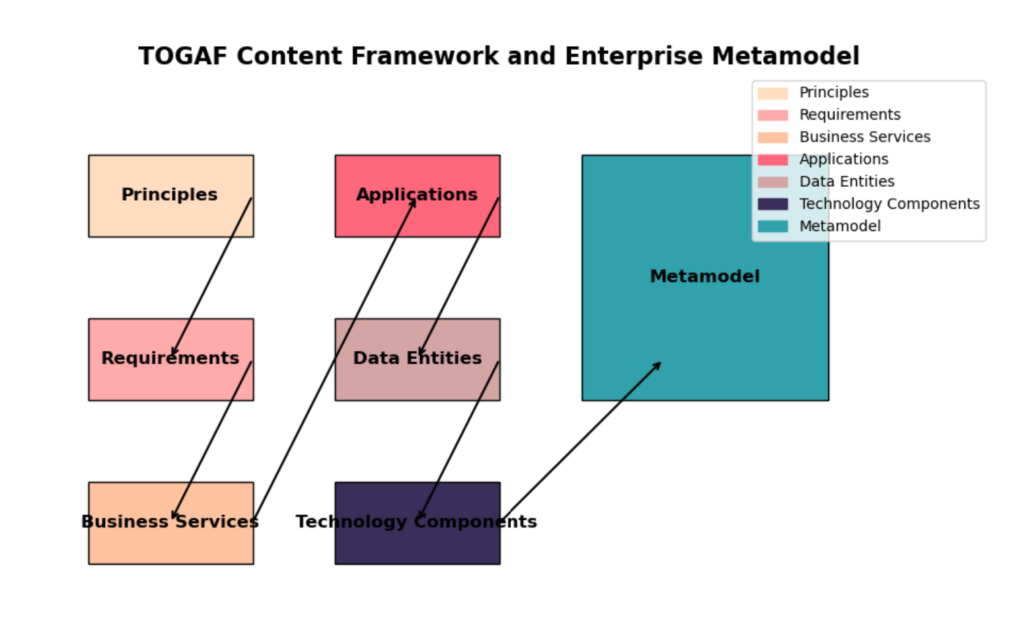-
The TOGAF® Content Framework and Enterprise Metamodel
- Posted on: June 2, 2025
- by: Anand Pandey
- 0 Comments
The TOGAF® Content Framework provides a structured model for developing, managing, and communicating enterprise architecture artifacts. At its core lies the Enterprise Metamodel, which defines the types of architectural building blocks and their relationships.
Together, they ensure consistency, traceability, and reusability across architecture domains—Business, Application, Data, and Technology.
🧱 Key Concepts
🔹 TOGAF Content Framework
- A taxonomy and structure for organizing architecture artifacts.
- Supports the Architecture Development Method (ADM).
- Defines core content types such as:
- Principles
- Requirements
- Business Services
- Applications
- Data Entities
- Technology Components
🔹 Enterprise Metamodel
- A formal model that defines:
- Artifact types
- Relationships
- Attributes
- Enables tool interoperability and automated governance.
🖼️ Visual Diagram
Here’s a visual representation of the TOGAF Content Framework and Enterprise Metamodel:

🌍 Real-World Examples
1. Healthcare Provider – Integrated Patient Care
Scenario:
A national healthcare provider aims to integrate patient records across hospitals, clinics, and labs.Use of Content Framework:
- Principles: Data privacy and interoperability.
- Requirements: Unified patient ID, real-time access.
- Business Services: Patient registration, diagnostics.
- Applications: EHR systems, lab management.
- Data Entities: Patient records, lab results.
- Technology Components: Cloud storage, secure APIs.
Outcome:
Improved patient outcomes and operational efficiency through a unified architecture.
2. Telecom Company – 5G Rollout
Scenario:
A telecom company is rolling out 5G infrastructure and services.Use of Content Framework:
- Principles: Scalability, low latency.
- Requirements: Edge computing, network slicing.
- Business Services: Mobile broadband, IoT connectivity.
- Applications: Network orchestration tools.
- Data Entities: Subscriber profiles, usage data.
- Technology Components: 5G towers, edge servers.
Outcome:
Faster deployment and better alignment between business goals and technical execution.
3. Retail Chain – Digital Customer Experience
Scenario:
A retail chain wants to enhance its omnichannel customer experience.Use of Content Framework:
- Principles: Customer-centricity, agility.
- Requirements: Real-time inventory, personalized offers.
- Business Services: Order fulfillment, loyalty programs.
- Applications: CRM, e-commerce platform.
- Data Entities: Customer profiles, product catalog.
- Technology Components: POS systems, cloud analytics.
Outcome:
Increased customer satisfaction and sales through a consistent digital experience.
🧩 Conclusion
The TOGAF Content Framework and Enterprise Metamodel are essential tools for structuring and governing enterprise architecture. By clearly defining content types and their relationships, organizations can ensure alignment, traceability, and agility in their transformation journeys.
Tag